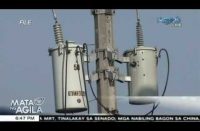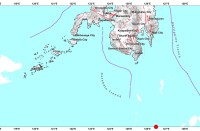MAY 8 (Reuters) — With the earthquake in Nepal having decimated its capital and countryside, millions of dollars in aid and assistance have flown into the Himalayan nation, including the latest radar technology designed to find survivors buried in rubble.
One such device is FINDER, Finding Individuals for Disaster and Emergency Response, which sends out low-powered microwave radar to detect human heartbeats.
“FINDER is a very low-powered radar that puts a low-powered radio signal towards the rubble, it illuminates it, then it looks for the reflections coming back. Now the rubble reflects the radio signals, as do humans who are trapped in the rubble. The humans move a little bit. The rubble doesn’t. So we look for those tiny motions and we try and process it and figure out whether those motions are from humans, or from an animal, or some piece of machinery,” said Jim Lux, a task manager at the Jet Propulsion Laboratory who helped spearhead its development.
The technology comes from a joint-partnership by the Department of Homeland Security’s (DHS) Science and Technology Directorate and the National Aeronautics and Space Administration’s (NASA) Jet Propulsion Laboratory. The agencies held a demonstration in Lorton, Virginia on Thursday (May 7).
FINDER fits into a pelican box about two-feet tall, a foot and a half wide, and about 10 inches deep. It works by pointing the face of the box at the rubble, and then the box emits the signals.
When the radar signals returns, data is collected and sent to a corresponding touch screen tablet. Rescuers can then read measurements such as whether there is a heartbeat, a heart rate, and respiration’s.
During the demonstration, Captain Randal Bittinger of the Fairfax County Fire and Rescue Department walked the media through the step-by-step process.
“So I have the front sensor detecting the pile, and it has detected one heartbeat with a heart rate of 67 and a respiration of 23,” Bittinger said before a team of rescuers then climbed a pile of rubble using complementary tools such as a Delsar seismic/acoustic listening device and a SearchCam stick.
Lux said the FINDER device is an additional resource to help speed up the search process.
“What FINDER is is a tool in the toolbox. Everything works best for some things and not as well for others things, so by giving the search and rescue personnel a variety of tools, that increases the odds of actually discovering someone and rescuing them while they’re alive.”
The new technology had its first taste in disaster relief efforts in Nepal this past week when two devices were deployed to the country.
Dave Lewis, a retired U.S. Army 1st Sergeant and president of FINDER’s manufacturer, R4, was in the Middle East for business when the earthquake struck in Nepal on April 25. DHS called and four days later he had landed in Kathmandu.
Two days after landing and six days after the earthquake, Lewis made it to the village of Chautara, northwest of the capital, where FINDER made its first discovery.
“It wasn’t until day six that I was able to get on a motorbike and head up north. Once I got up closer to the epicenter, that’s where I saw village after village after village totally decimated,” Lewis said.
One by one, Lewis and a group of international rescuers from China, the Netherlands, Belgium, and members of the Nepali army went from pile to pile, where often times the stench of corpses had already risen from the rubble.
Using FINDER, Lewis detected two heartbeats under two different collapsed structures. Upon alerting the Nepali army, rescuers found and saved the men.
“When you see the heartbeat and the respiratory cycle on FINDER, that feeling of actually being able to help overwhelms you. Then the very next thought you have is for that victim’s family and whether or not that victim is going to be okay,” Lewis said.
Lux said FINDER can detect people under up to 30 feet (9 meters) of rubble, behind 20 feet (6 meters) of solid concrete, and from up to 100 feet (30 meters) away in open spaces.
He said these abilities make the device a game-changer.
“FINDER is a game changer for search and rescue because it’s so different than the other ways we’ve searched in the past. The ability to detect heartbeats is sort of a unique capability. It doesn’t require that the victim be conscious and it also can search fairly large areas quickly, which will increase the overall speed of the search process,” Lux said.
Officials said they plan to commercialize the device so it can be manufactured and distributed around the world. (Lorton, Virginia, United States)







